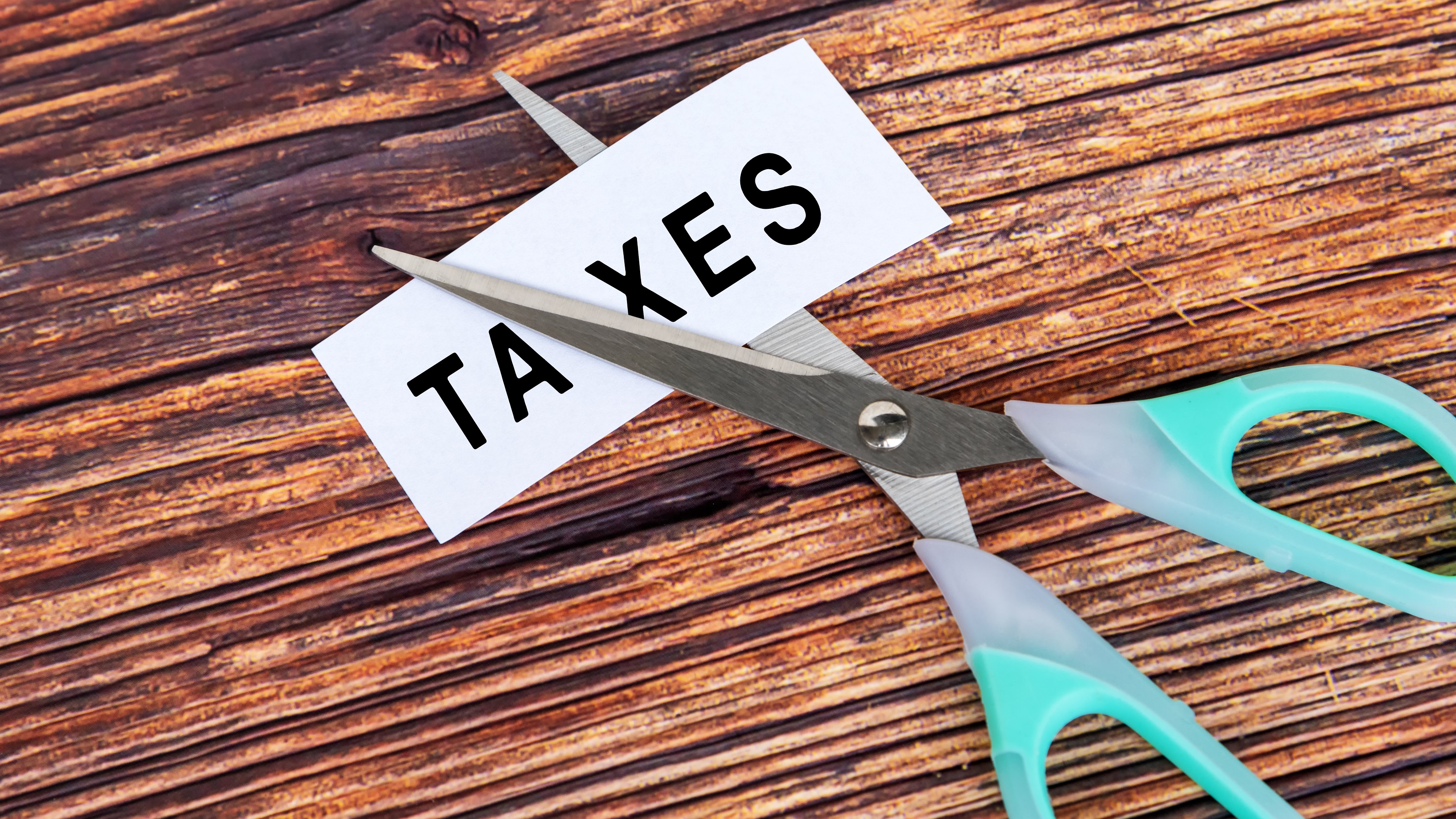Three Ways to Reduce Taxes on Your Investment Earnings
Proactive tax planning using these strategies could help you keep more of your hard-earned money, now and in the future.


When it comes to investing and growing wealth to secure your financial future, it isn’t how much you make that matters most — it’s how much you keep. And yet, investors often overlook the critical role tax efficiency can play in successful retirement planning.
The strategic management of your investments can help you minimize what you owe, maximize what you earn (and hold on to) and build a nest egg that will last longer for you and your heirs. But it takes proactive planning to make it work. This isn’t something you can wait until each year’s tax season to worry about and maybe try to play catch-up. Proper tax planning means looking at the big picture, assessing your goals and finding opportunities to reduce your tax burden for the short and long term.
With that in mind, here are three moves that could help you lower your tax bill — and keep more of your hard-earned money — now and in the future.

Sign up for Kiplinger’s Free E-Newsletters
Profit and prosper with the best of expert advice on investing, taxes, retirement, personal finance and more - straight to your e-mail.
Profit and prosper with the best of expert advice - straight to your e-mail.
1. Consider a Roth conversion.
One of the most powerful tools for tax-efficient investing is the Roth IRA, which offers several advantages in retirement. While contributions to a Roth account are made with after-tax dollars — so you don’t get the upfront tax savings that other retirement accounts can offer — the earnings in a Roth grow tax-free, and qualified withdrawals are tax-free as well.
If you’ve been putting most of your retirement savings into a tax-deferred investment account — such as a traditional IRA or 401(k) — converting all or a portion of those funds to a Roth could go a long way toward reducing your future tax bills.
Of course, you’ll have to pay taxes on any money you convert in the year you convert it, so you’ll want to be cautious with your withdrawals and keep an eye on your tax bracket. But the benefits of a Roth are many, including:
- There are no required minimum distributions (RMDs), so you can keep growing the money in your account for as long as you like.
- Qualified withdrawals from a Roth IRA don't count toward the modified adjusted gross income (MAGI) threshold that’s used to determine the Medicare surtax.
- A Roth IRA can provide more flexibility when it comes to paying taxes in retirement. You can use it in combination with a tax-deferred account, for example, to manage your tax liability from year to year.
Another plus: When you pass down a Roth IRA to your heirs, they, too, can enjoy tax-free growth.
Let’s say you have a traditional IRA with a substantial balance, and you convert a portion of those funds to a Roth IRA over time. Your heirs can wait up to 10 years after your death to withdraw their money, and during that time, the money can continue to grow. The Rule of 72 tells us if the annualized return is greater than 7.2%, the inherited Roth IRA could even double in that 10-year period.
2. Make the most of charitable giving with a donor-advised fund.
If you like the idea of donating to charity, and you want to include it in your planning, there are several strategies that can offer a substantial tax break in the process. Among the most popular options is a donor-advised fund (DAF).
A DAF is like an investment account, only it’s designed specifically to grow money for charitable giving. Its benefits are twofold:
- Using the DAF, you can “stack” multiple years’ worth of donations into one large donation (cash and/or assets) that puts you over the Tax Cuts and Jobs Act threshold for itemizing your charitable deductions in one year. This provides an immediate tax deduction.
- The DAF’s sponsoring organization then invests that money. It can continue to grow tax-free until it’s paid out tax-free over time to qualifying charitable causes. The DAF’s sponsoring organization has legal authority over the assets in your fund, but as the “donor adviser,” you still can have some say in how the money is invested as well as which charities receive donations and when.
With a DAF, you can maintain your commitment to charitable giving while optimizing your tax savings, both in the current year and throughout your lifetime.
3. Reduce capital gains taxes with loss harvesting.
It’s natural to root for the winners in your portfolio — but sometimes investments that are losing value can still do some good for your bottom line.
With a strategy called tax-loss harvesting, you can sell long-term positions that have produced capital losses, replace them with similar but not identical investments and then use that loss to offset the taxes on realized investment gains from the same year. If your losses exceed your gains, you can even use the excess to offset up to $3,000 of ordinary income each year, with any remaining losses carried forward to future years.
By implementing this strategy regularly to help minimize your tax bills, you can keep more of your money invested longer, so it stays working for you.
Proactive planning is key
Strategies like Roth IRA conversions, donor-advised funds and tax-loss harvesting can help you reduce taxes during your lifetime and leave a tax-efficient legacy for your heirs. And if you can combine one or more strategies, you could further bolster your savings. (For example, the income tax deduction on a DAF contribution could be used to offset the increased tax liability from a Roth conversion.)
You’ll likely need some help, however, to make sure you’re getting the most out of your investments and that you’re following IRS rules. By consulting with a financial adviser or tax professional, you can tailor these tax-saving strategies to your unique financial situation and improve your chances of achieving your family’s goals.
Kim Franke-Folstad contributed to this article.
Appearances in Kiplinger were obtained through a PR program. The columnist received assistance from a public relations firm in preparing this piece for submission to Kiplinger.com. Kiplinger was not compensated in any way.
Related Content
Get Kiplinger Today newsletter — free
Profit and prosper with the best of Kiplinger's advice on investing, taxes, retirement, personal finance and much more. Delivered daily. Enter your email in the box and click Sign Me Up.

David McGill is president of Comprehensive Financial Consultants, which he founded in 1998. He is an Accredited Investment Fiduciary (AIF®) and a financial professional who can offer both investment advice and insurance products. McGill has passed the Series 7, 24, 63 and 65 securities exams and has life, health and annuity insurance licenses.
-
 Tax Day 2025: Don’t Miss These Freebies, Food Deals and Discounts
Tax Day 2025: Don’t Miss These Freebies, Food Deals and DiscountsTax Day You can score some sweet deals on April 15 in some select restaurants like Burger King, Shake Shack, and more.
By Gabriella Cruz-Martínez
-
 Registered Social Security Analyst: The Retirement Professional You Didn’t Know You Needed
Registered Social Security Analyst: The Retirement Professional You Didn’t Know You NeededThe services of a Registered Social Security Analyst (RSSA) are often overlooked. Yet, for those planning for retirement, nearing or already retired, an RSSA can be an invaluable resource.
By Donna LeValley
-
 Should You Hire a Public Adjuster for Your Insurance Claim?
Should You Hire a Public Adjuster for Your Insurance Claim?As natural disasters strike more often, insurance clients are asking, 'What should I do, or who should I hire, if my insurance company is jerking me around?'
By H. Dennis Beaver, Esq.
-
 Tips to Help Entrepreneurs Create Self-Sustaining Businesses
Tips to Help Entrepreneurs Create Self-Sustaining BusinessesWith the right processes and people in place, a truly sustainable business can be efficiently passed on to a successor and run profitably on its own.
By Jason L Smith, CEP®, BPC
-
 Navigating Annuity Taxation: A Guide for Financial Advisers
Navigating Annuity Taxation: A Guide for Financial AdvisersUnderstanding the essentials of taxation in retirement income strategies involving annuities helps ensure positive outcomes for clients.
By Jake Klima
-
 How Google Reviews Can Help (or Hurt) Financial Advisers
How Google Reviews Can Help (or Hurt) Financial AdvisersDon't leave your Google Business Profile unclaimed — someone else can make changes if they claim it. Also, here's what you can (and cannot) do with the reviews.
By Jeff Briskin
-
 How Baby Boomers and Gen Xers Are Redefining Retirement Living
How Baby Boomers and Gen Xers Are Redefining Retirement LivingBoth generations need to embrace change and leverage real estate as a dynamic asset in their retirement planning. Here's how financial advisers can help, too.
By David Conti, CPRC
-
 How Good Advisers Manage Risk in Challenging Markets
How Good Advisers Manage Risk in Challenging MarketsThey understand the difference between what might be real challenges to an investor's strategy and fear brought on by market volatility.
By Ryan L. Kirk, CFA®
-
 Financial Planning's Paradox: Balancing Riches and True Wealth
Financial Planning's Paradox: Balancing Riches and True WealthWhile enough money is important for financial security, it does not guarantee fulfillment. How can retirees and financial advisers keep their eye on the ball?
By Richard P. Himmer, PhD
-
 A Confident Retirement Starts With These Four Strategies
A Confident Retirement Starts With These Four StrategiesWork your way around income gaps, tax gaffes and Social Security insecurity with some thoughtful planning and analysis.
By Nick Bare, CFP®